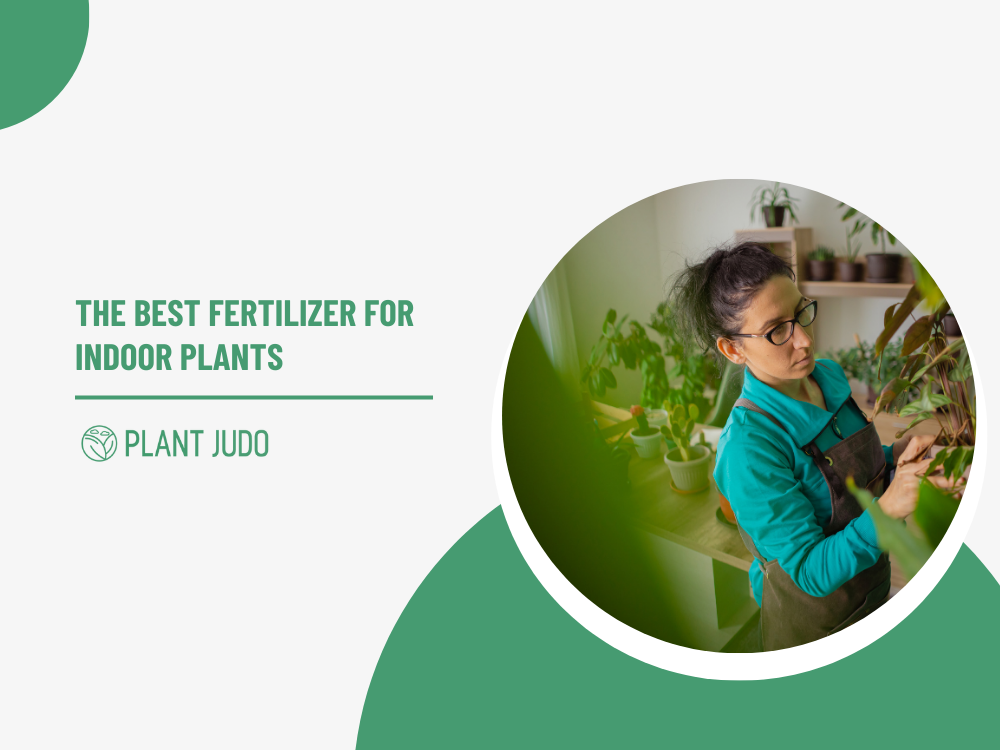For indoor plants to thrive, houseplant fertilisers can help provide them with all the nutrients they need. For healthy roots, lush foliage, and beautiful flowers – indoor plant fertilisers should contain a balance of minerals. Plant foods, granules, and slow-release pods can also be used as fertilisers for houseplants.
It can be challenging to choose the right type of fertiliser for houseplants. Some houseplants have specific nutrient requirements, despite the availability of all-purpose liquid plant food. It is therefore essential to choose a houseplant fertiliser that contains the right amounts of micro- and macronutrients.
In this article, you will find a comprehensive guide to fertilise houseplants. There are several types of organic fertiliser and liquid plant fertiliser that you will learn about. You can also find out which indoor plant fertiliser works the best for your potted plant by reading a detailed review.
Using Fertiliser Indoors Is Necessary For Plants.
The nutrients needed for the healthy growth of houseplants must be provided by fertilising them. Feeding indoor plants regularly ensures that they have access to the minerals they need. Because indoor plants do not have organic matter like outdoor plants, fertilising them is crucial. differs from plant food from a scientific perspective. Plants absorb water and carbon dioxide to generate food. Plants in the soil also need nitrogen, phosphorus, and potassium. A fertiliser provides plants with these nutrients.
Photosynthesis is the process by which plants obtain their food. During the growing season, plants absorb carbon dioxide from the air as well as water from the soil. As a result, sugars are produced, which are used by the plant as food. As a result, plants produce their food to feed themselves.
A plant’s needs go beyond food. In potting soil, nitrogen, phosphorus, and potassium are usually lacking, so fertilising plants regularly is imperative. Most people use plant food interchangeably with fertiliser, even though it is technically not a fertiliser.
Fertiliser Types For Houseplants
Generally, indoor plants use three types of fertiliser: Liquid fertilisers added to water are applied when needed when watering plants. Nutrients are released when plants are watered with granular plant fertilisers. Nutrients are slowly released into the soil with slow-release fertilisers.
Organic house plant fertilisers are more popular than synthetic ones among houseplant owners. Indoor plant fertilisers are made from organic ingredients that help improve the soil’s quality and supply essential nutrients for plants. Most organic fertilisers contain kelp, fish emulsion, worm tea, compost tea, or plant extracts.
In Terms Of Indoor Plants, What Is The Best Type Of Fertiliser?
It is essential to consider several factors when choosing a type of houseplant fertiliser. The type of fertilisation method you use depends on the mineral balance of your plants and the soil type. There are advantages and disadvantages to each method of fertilising plants. Let’s look into a few of them
Liquid fertilisers
Liquid fertilisers are easier to use and control. It’s just a matter of diluting it to the appropriate strength and fertilising your plants as needed. During the dormant winter months, you can delay fertilisation with liquid fertilisers.
Getting the right quantities can also be challenging. Because a teaspoon of fertiliser can make a gallon of liquid plant food, you can end up throwing away fertiliser if you only have a few houseplants.
Slow-release fertilisers
In the form of pods, spikes, and capsules, nutrients are slowly released into potting soil. There’s an advantage to these in that you don’t have to worry about feeding your plants. The quantity of nutrients in the potting mix, however, is difficult to control. Small pots are better suited for slow-release fertilisers.
Granular fertilisers
These fertilisers are best used when repotting plants in fresh soil. When the plant is watered, the granules release nutrients into the soil. There is no control over the strength of fertilisation, just as it is with slow-release fertilisers.
Organic houseplant fertiliser
These include liquid fertiliser, granular fertiliser, and slow release fertiliser. It improves soil structure and is environmentally friendly, which makes organic liquid plant food an attractive choice. Using organic fertilisers for houseplants is also less likely to result in root burn and excess minerals in the soil.
The Best Indoor Plants fertiliser
Miracle-Gro Plant Food (Liquid), Feeds Indoor Houseplants
The Miracle-Gro liquid plant food is suitable for all types of houseplants. An even ratio of N, P, and K is used in the balanced fertiliser. Plants can be fed directly from the bottle, thanks to the handy pump application. All types of houseplants can be hydrated by accurately measuring fertiliser and diluting it with water.
Edible plants can also be grown indoors with this all-purpose fertiliser. This plant food is recommended for feeding plants weekly by the manufacturer.
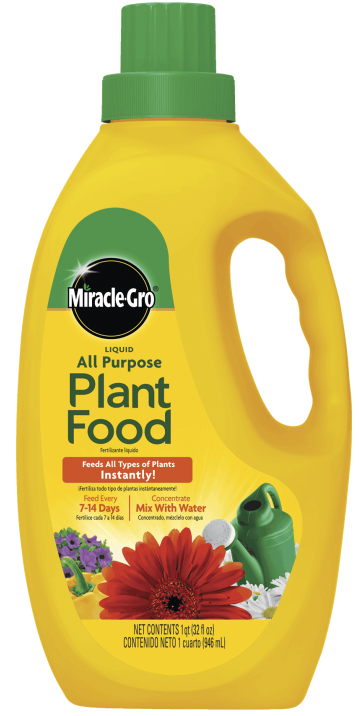
Espoma Company Organic Indoor Plant Food
You can easily mix and use this liquid organic houseplant fertiliser. Plants of all types can benefit from this balanced, all-purpose feed with an N-P-K ratio of 2-2-2. Several ingredients go into the liquid fertiliser, including poultry manure, kelp extract, fish protein, and bone meal.
You can keep your houseplants healthy with this liquid fertiliser, which contains micronutrients. Beneficial microbes also maintain healthy soil. Over-fertilizing houseplants can be prevented by using a handy measuring cup.
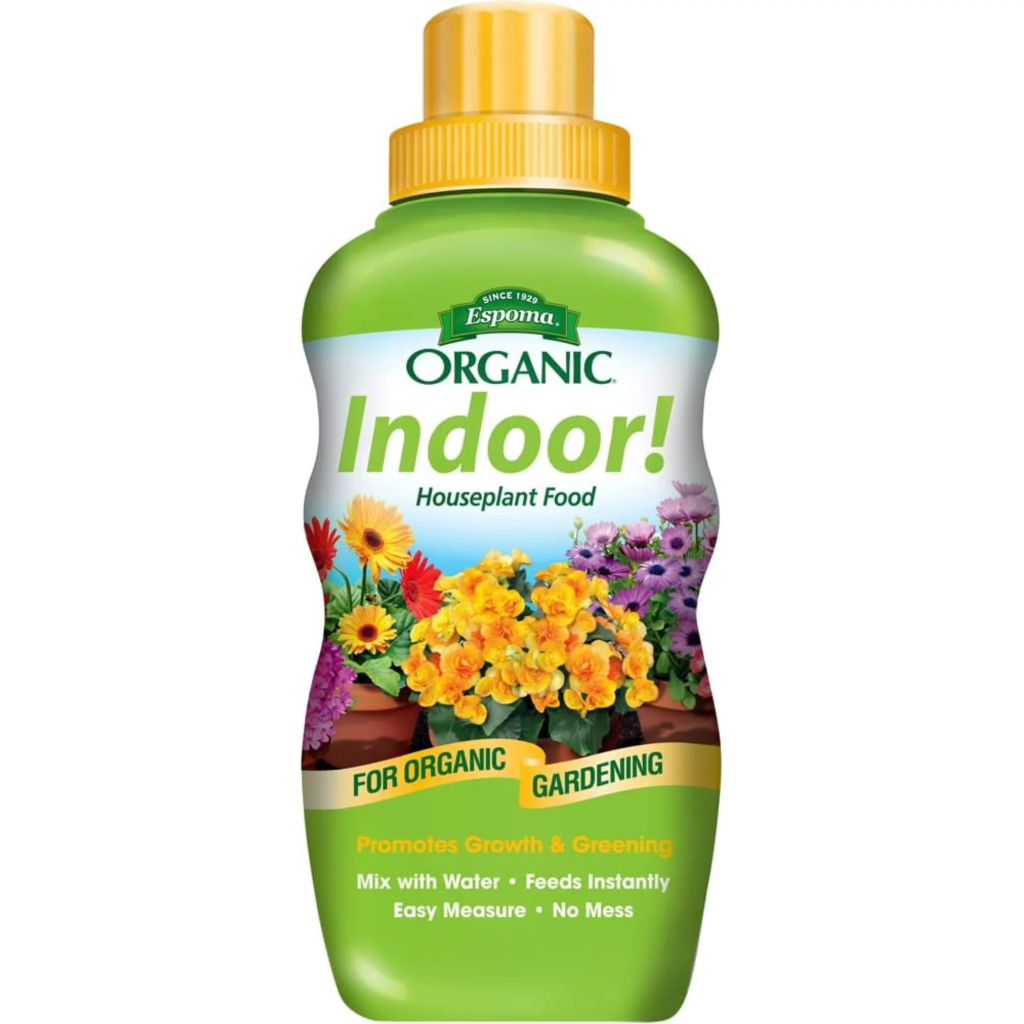
Organic Liquid Seaweed and Kelp fertiliser
The essential three macronutrients are provided by kelp and seaweed, which are excellent natural fertilisers. By using Bloom City’s kelp fertiliser, plants will benefit from the natural enzymes in it. There is no risk of over fertilisation with this natural product.
Seven species of sea plants are included in this kelp extract fertiliser. Plants grow more vigorously when their roots are strengthened, and their soil is improved by seaweed extract. There are no fillers in this product, unlike some cheap seaweed fertilisers. A variety of enzymes, sugars, and growth hormones are naturally found in them that are critical to the health of indoor plants.
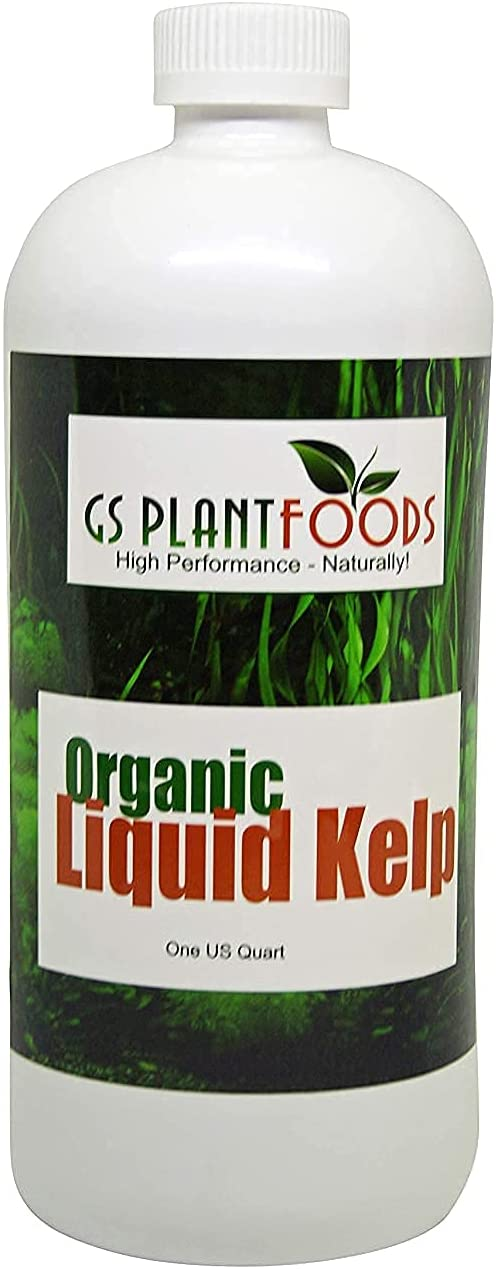
Osmocote Smart-Release Plant Food Plus Outdoor & Indoor
Your plants will be fed for up to six months with this granular, slow-release fertiliser. There are copper, boron, iron, manganese, and zinc in the formula. The N-P-K ratio is 20-20-20. When you water the plant, the resin coats the granules, so nutrients are released gradually.
The granules should be worked into the top 3-inch (7.5 cm) layer of potting soil before use. If you use the fertiliser correctly, the manufacturers provide a “no burn” guarantee.
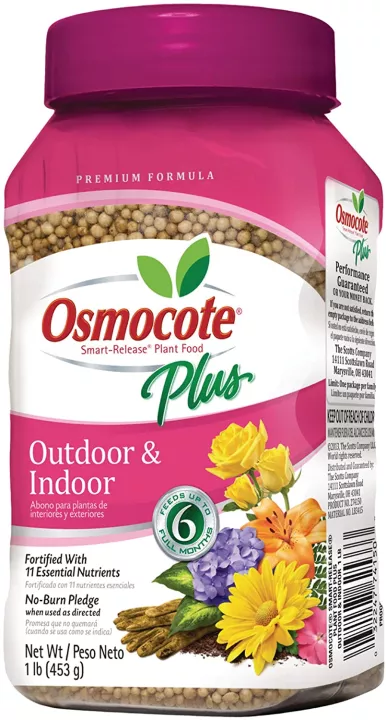
Miracle-Gro Water Soluble Plant Food
All types of indoor and outdoor plants can benefit from this multi-purpose fertiliser. Before feeding plants, you mix granular plant food with water. There is an excellent N-P-K ratio of 18-18-21, so it’s great for all kinds of plants. The manufacturers recommend a weekly or biweekly feeding.
This plant food also contains magnesium, copper, iron, and zinc, in addition to the three crucial nutrients for plants. Plant food needs to be added to water one teaspoon at a time.
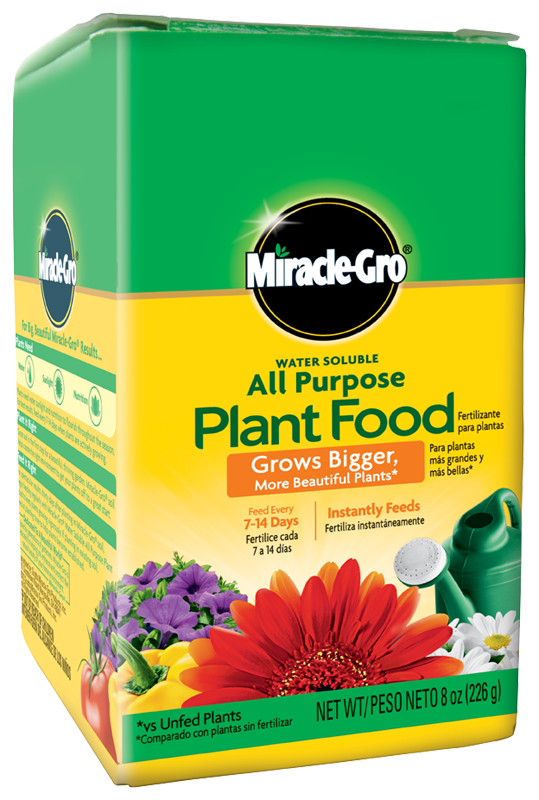
Conclusion
Indoor plants are trendy, and it’s easy to see why. It’s not just that they’re beautiful, but many of them can improve your indoor air quality, and they can also help you relax. Their growth will be stunted, however, if they do not receive the proper care. You should start using a high-quality fertiliser if you want to take your indoor plant care to the next level.
With this post, you should have a better idea of which indoor gardening fertiliser is best for your houseplants-wishing you the best of luck with your indoor plant adventures!
FAQs
How can I supplement and fertilise my indoor plants during the winter months?
Winter fertilisation doesn’t always need to be done in tropical climates. There has been a significant slowdown or even a complete halt to planting growth. However, some indoor plants, such as African Violets, might benefit from a feed from time to time. Super hungry overwintering plants should be fed with a diluted fertiliser mix if this is the case. It is best to use a water-soluble fertiliser that is low in concentration.
Can i use coffee grounds as a fertiliser for indoor plants?
You can, but you need to be cautious. Nitrogen is a valuable component of coffee grounds. However, some precautions should be taken before using them. This is because different types of moulds, mainly green moulds, absolutely love fresh coffee grinds and will devour them as soon as they get the chance. It’s true that green mould isn’t particularly harmful to plants, but is it healthy for humans to breathe in a pot or container filled with green mould spores? Probably not.
You can either spread coffee grinds very thinly around the base of a plant and cover it with soil, mix it into a new batch of potting soil in minimal amounts when you plant or repot the plant, or compost it.

